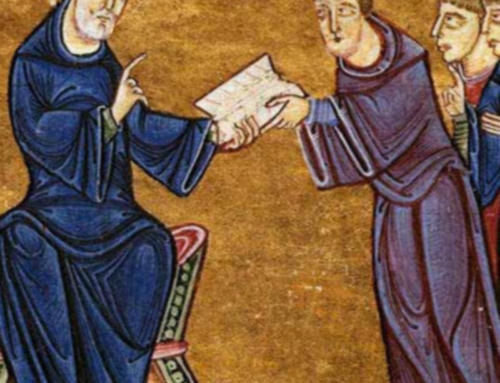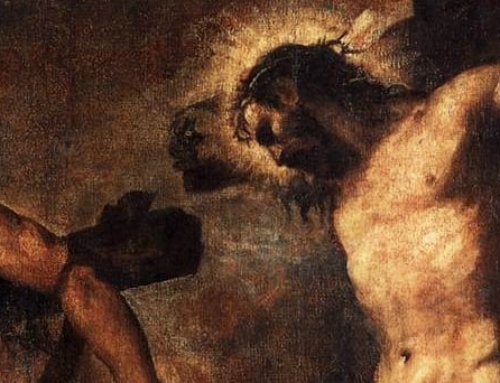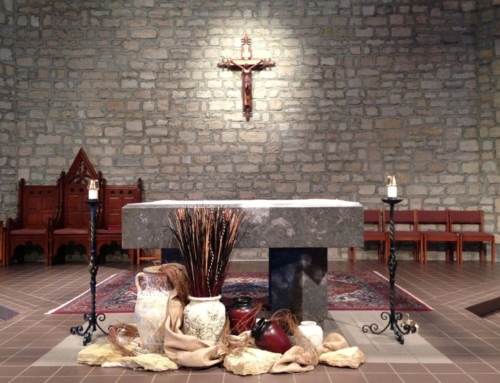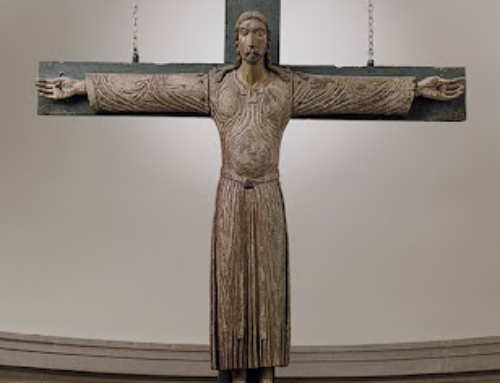One of the arguments against the ordination of women to the priesthood is that the priest stands in persona Christi. He is a kind of living icon of Christ in the liturgy and in the church.
The argument follows that because Jesus was male the priest must be male.
The proponents of women’s ordination to the diaconate suggest that the women can therefore be deacons because the deacon does not stand in persona Christi in the same way that the priest does. However, I’m not so sure that this is the case.
Certainly if the deacon stands simply as a sign of Christ the Servant, then women could serve as deacons because they can serve the church–and do already serve the church in such practical and wonderful ways.
However, Christ is not simply a practical servant who washes his disciples’ feet, feeds the hungry and heals people. He fulfills a very special servant role which connects back to the prophecies of Isaiah known in which the servant of the Lord is seen as the Suffering Servant.
These prophecies are read during Good Friday and are understood specifically as pointers to Christ’s work not only as a practical servant, but the suffering servant who gives his life on the cross for the redemption of the world.
Jesus himself makes the connection in Mark 10 where he says, “The Son of Man did not come to be served, but to serve, and to give his life as a ransom for many.”
Therefore, the ultimate service that Jesus Christ gives is the laying down of his life in sacrifice.
The Suffering Servant is therefore identical with Christ the Priest and Victim. The unity of these two is seen liturgically and sacramentally in the fact that while every deacon is not a priest, every priest is also a deacon. Every priest was ordained deacon first and his diaconal ordination is subsumed and completed in his priestly ordination. The permanent deacons too, point to this fulfillment in their service at the altar. They do not serve at the altar except with a priest there.
Is this connection between the diaconate and the priesthood co incidental? I don’t believe so because St Stephen, the first martyr, was also one of the first deacons. He completes in his martyrdom the ultimate service and sacrifice of laying down one’s life and thereby shows that the diaconate is also a profound re-configuration of the man to Christ.
Is this Suffering Servant role distinctively and necessarily masculine? On its own, I don’t think so. However, considering the solidarity between the deacon and priest I have outlined, it would seem to me that having female deacons would be a rupture with this iconic continuity. If the Suffering Servant and the Priest-Victim are two sides of the same coin, then women deacons would be disruptive of that iconic mystery.
Might there be a place for the restoration of the order of deaconesses in the church? Is there a distinctive role for women AS women–and not just assuming what has always been a masculine role and icon? I can’t think of one in particular, nor can I think of any roles and functions in the church that women cannot do and are not doing already, or which might be opened to women in the future.
To simply create women deacons or re establish the ancient order of deaconesses seems an un necessary addition to clericalism at a time when we really need to continue to empower the laity and downshift from the continued clericalism in the church which so often leads to croneyism and corruption.
The only other reason to have women deacons therefore, would be to pander to the demands of feminists, and I’m afraid that is a very weak reason….if a reason at all.







Leave A Comment
You must be logged in to post a comment.